|
TRANSLATE THIS ARTICLE
Integral World: Exploring Theories of Everything
An independent forum for a critical discussion of the integral philosophy of Ken Wilber
SEE MORE ESSAYS WRITTEN BY FRANK VISSER
Integral Theory and the
‘Big History’ Approach
A Comparative Introduction
Frank Visser
“The two go hand in hand like a dance: chance flirts with necessity, randomness with determinism. To be sure, it is from this interchange that novelty and creativity arise in Nature, thereby yielding unique forms and novel structures.”
— Eric Chaisson, Epic of Evolution: Seven Ages of the Cosmos (2005).
Is Integral Theory a true Theory of Everything? Does it have real explanatory power in the domains of matter, life and mind/culture?
The upcoming third Integral Theory Conference titled "Connecting the Integral Kosmopolitan" (San Francisco, July 18-21, 2013) will feature a confrontation of Wilber's integral theory with two other luminaries in the wider integral field: philosopher Roy Bashkar and sociologist-philosopher Edgar Morin, who both will be present as keynote speakers at this conference. Bashkar's philosophy is known as "Critical Realism"; Morin's approach is called "Complex Thought". This is definitely a sign of the maturation of the field of integral theory.
At the second Integral Theory Conference of 2010, which I attended (Visser 2010b), an attempt was made by the organizers to replace the Wilber-dominated or Wilber-centric approach of the first Conference (in 2008), with a Wilber-based approach, which would still take Wilber as foundational but was more open to other approaches as well. This time, a further and important step is made by actively inviting important professional philosophers who differ from Wilber in important respects, but still share the same multi-disciplinary spirit.
Both Bashkar and Morin have published extensively over the years, as their Wikipedia pages show to the casual reader. Absorbing these works and contrasting them to the equally prodigious writings of Wilber is for sure a task for many years to come. A casual look at their literary output makes one long for Wilber's popular writing style—though at the same time this might precisely be the cause of Wilber's slow acceptance by the academic community. However that may be, these three philosophers will undoubtedly have important points of agreement and disagreement, which are worthy of consideration.
The ‘Big History’ approach
 Fred Spier
Fred Spier
I would like to suggest a further field of comparative integral study, that of the Big History approach.
I would like to suggest a further field of comparative integral study, that of the so called "Big History" approach. I have discovered this only recently—following up on the suggestion by Jeff Meyerhoff (Visser 2011a) that Wilber might do well to connect to this decidedly more academic integrative and interdisciplinary approach to science, to get academic recognition, or even to survive at all in the intellectual field. The field of big history is another major integrative approach that tries to cover and explain the domains of matter, life and culture in a naturalistic way, and is struggling to get a foothold in academia. There is an active International Big History Association, which organizes large international conferences.
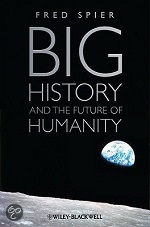
In Big History and the Future of Humanity (2011)—a remarkably slim volume of 200 text pages, considering the vastness of its scope—Dutch "big historian" Fred Spier of the Free University of Amsterdam gives both a readable account of this exciting field of study, and some original contributions. We will use this volume to find and explore points of agreement and disagreement with integral philosophy as it has been developed by Ken Wilber.
An online synopsis of his specific approach to Big History can be found in "How Big History Works", an early essay he wrote in 2005 and which was published in Social Evolution & History, the abstract of which reads:
In this article, I advance an explanatory scheme for all of history
from the beginning of the Universe until life on Earth today (big
history). My scheme is based on the ways in which energy levels as
well as matter and energy flows have made possible both the rise
and demise of complexity in all its forms.
As Spier describes his research agenda in the book that grew out of this essay:
My effort should be seen as a first attempt at formulating a coherent theoretical framework for Big History. This approach may actually constitute an entire interdisciplinary research agenda that, is pursued, would allow scientists ranging from astronomers to historians and anthropologists to collaborate in unprecedented ways while speaking the same scientific language. (p. 39)
Another important voice in the world of Big History is that of astronomer Eric Chaisson, author of Cosmic Evolution: The Rise of Complexity in Nature (2001) and Epic of Evolution: The Seven Ages of the Cosmos. A good visualization of the ground covered by Big History can be found on his highly informative website "Cosmic Evolution":
 Cosmic Evolution (Eric Chaisson)
Cosmic Evolution (Eric Chaisson)
(www.cfa.harvard.edu/~ejchaisson/)
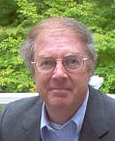 Eric Chaisson
Eric Chaisson
According to Chaisson, there have been seven major Ages of Epochs of the Cosmos (and eight if we include the Future): (1) particulate, (2) galactic (3) stellar, (4) planetary, (5) chemical, (6) biological, (7) cultural, (8) future. Spier has adopted Chaisson's focus on energy, with minor technical amendments. This sequence displays the heavy emphasis on science in this brand of Big History, but it breathes the wide vistas of a true Theory of Everything. For fascinating details about all of these Cosmic Eras I would like to refer to Chaisson's website.
As a first approximation, both approaches—Integral Theory and Big History—try to cover all fields of intellectual knowledge and are in favor of multidisciplinarity. But there are distinct differences of emphasis. Wilber's stronghold is in the humanities, and of course the field of mystical spirituality. From there he generalizes to reality at large, so that not only do we have consciousness, but consciousness, or interiority as he prefers to call it, becomes a fundamental feature of reality itself, even to the level of atoms (this is often called "panpsychism"). "Consciousness goes all the way down" is his favorite expression.
In contrast, Big History seems to work its way upward through the empirical domains of physics and biology, culminating in the fields of mind and culture. That Spier has been trained both as a plant geneticist and a cultural anthropologist makes him an excellent candidate to cover both fields of science. Wilber has been trained in biochemistry but turned to the humanities and spirituality as an autodidact. So one might expect areas of strength and weakness in both camps, as we will try to illustrate in this essay.
I can't speak for Bashkar and Morin, but as I have demonstrated on this website, Wilber's dealings with the hard sciences, both in physics (Visser 2011b) and biology (2010a) have been problematic, as far as I am concerned. On the other hand, the strongly scientific framework of Big History would easily lead to an overestimation of materialistic and energy-based factors in evolution. Obviously, then, an in-depth comparison between the two approaches is in order and would undoubtedly benefit both fields of study.
Historical Forerunners
It is unfortunate that Wilber has never taken the time to flesh out his philosophical position.
But let's first introduce some important "big historians", keeping in mind that, as Spier notes in Big History, "an established academic discipline of Big History does not yet exist" (p. 9).
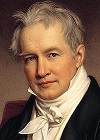 von Humboldt
von Humboldt
Spier points to Alexander von Humboldt (1769-1859) as one of the first Big History pioneers, who was one of the founders of the field of geography. During his lifetime, Von Humboldt was widely read and "about as famous as Albert Einstein today" (p. 10). What is more, and intriguing in the context of our comparison with Wilber:
Late in life, von Humboldt began to write a multi-volume series called Kosmos, in which he intended to summarize all the existing knowledge about the history of nature, including human history as he understood it. He called his approach "a cosmical history of the universe". The first volume was published in 1845 CE in German. These books were widely read and translated into many languages. Unfortunately, von Humboldt passed away before finishing his project. (p. 10)
We can instantly note some remarkable coincidences. Wilber's main work so far, Sex, Ecology, Spirituality (1995), is the first volume of a planned trilogy called Kosmos. Wilber uses the spelling "Kosmos" to denote the mutidimensional nature of reality, in the Pythagorean sense, to distinguish it from the material Cosmos. (In German, Cosmos is written with a "K" so this distinction is lost). As he wrote in an interview I did with him in 1995:
I am now in the process of writing a three-volume series called Kosmos, which at least attempts to address all the major fields of human knowledge.
The original idea was to publish this trilogy, a volume every decade. The second volume was to be about gender issues, and was tentatively called Sex, God and Gender. The third volume was intended to be more philosophical, and was named The Spirit of Post-Modernity. However, the intended second volume was never published, unfortunately, or even written—due to chronic health problems of Wilber or his publication strategy: he decided to write more popular books like A Brief History of Everything (1996) or A Theory of Everything (2000).
For those familiar with Big History book titles, these two books from Wilber don't cover cosmology or biology, but are integrative treatments of the humanities. So is Integral Theory a true Theory of Everything? Does it have real explanatory power in the domains of matter, life and mind/culture? Of course, not even the TOE's of physics would qualify as such, because these don't cover the fields of life and mind/culture. But Big History and integral philosophy do hold on to that claim.
 Ken Wilber
Ken Wilber
However, around 2000 Wilber decided to complete the planned third volume first, and publish it as Kosmic Karma and Creativity. At this moment (2013), he has announced the completion (Wilber 2013) of this volume, which will now be titled Sex, Karma, Creativity—apparently, sex has crept in again, for no apparent reason, if you ask me... (It is unclear if the original second volume will ever see the light of day. Fortunately, other writers are beginning to explore that subject now, e.g. Marin Učik, Integral Relationships, 2010).
On a more frivolous note, Wilber has been called "The Einstein of Consciousness Research", even if the term was dubbed by his literary agent John White (and one critic would therefore prefer to have it changed to "The Einstein of P.R.") (Falk, 2009). It only goes to show that Wilber's authority and popularity in certain circles has been immense, which only the name "Einstein" seems to cover for these persons.
What is more, Wilber is often advertised as "the most translated academic author" in the United States. Though some would question if his works qualify as "academic" in the proper sense, or would better be described as "fallen in a place in between traditional academic discourse and more general popular philosophical discourse", as Mark Forman and Sean Esbjörn-Hargens (2008), founders and organizers of the Integral Conferences, phrased it on this website.
It is unfortunate that Wilber has never taken the time to flesh out his philosophical position, but perhaps this new volume of the Kosmos-trilogy will deliver on that, especially since professional philosophers are now in his audience, and he can no longer bury his philosophical arguments in footnotes. Is Ken Wilber a modern day Von Humboldt?[1]
Spier mentions a few other historical persons as forerunners of Big History (Paul-Henri Thiry Baron d'Holbach, who influenced the French encyclopedians, René Descartes, who facilitated a materialistic outlook on life, and Robert Chambers, author of the anonymously published Vestiges of the Natural History of Creation (1844), who was an major influence on Darwin), but we will skip these for now.
Some important modern pioneers
Contrary to the standard big historians, Wilber has paid a lot more attention to the cultural dimension.
According to Spier, it was only in the 1970s that interest in our cosmic history and our place in nature at large was triggered when the Apollo flights returned with the famous "Earthrise" photo, which features on the cover of his book. Then, in the 1980s, various independent authors, such as geologist Preston Cloud, astrophysicist G. Siegfried Kutter, and astronomers George Field and Eric Chaisson,
used this new knowledge to achieve fresh general syntheses. This included university courses and books dealing with a scientific-based history of everything, with emphasis on their own specializations. Being natural scientists, they paid only limited attention to human history. Subsequently, these large-scale accounts of history began to fuse into a new genre, increasingly known as "Big History" among historians in Australia, Western Europe and the United States, as "cosmic evolution" among astronomers and astrophysicists and as "universal history" in Russia. (p. 15)
Spier mentions one other theoretical pioneer in particular:
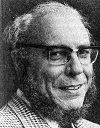 Erich Jantsch
Erich Jantsch
Austrian philosopher Erich Jantsch was the first to develop a systematic model for Big History in The Self-Organizing Universe (1980), in which he summarized many important principles. Soon after its publication, however, Jantsch passed away, which may partially explain why his book did not become better known among academics. Remarkably, in Russia Jantsch's work served as a source of inspiration for a number of scholars... (p. 15)
Finally, at the end of the 1990s pioneers started to teach this material in an academic setting: David Christian, a scholar of Russian history in Sydney, Australia, and John Mears, in Dallas, Texas. Where Mears tried to cover personally the field of Big History as a whole, Christian invited specialists from the various fields to teach about their own expertise. Spier borrowed this format from Christian, and started a similar study course at the Free University of Amsterdam, The Netherlands, which has now run for almost twenty years.
What is more, Christian collaborated with Bill Gates, who funded the Big History Project, an effort to offer this material online as a free study course.
Again, some comments regarding Wilber are in order. He too used Jantsch' work as a source of inspiration. In his magnum opus Sex, Ecology, Spirituality (1995) Erich Jantsch is mentioned several times in a favorable way. Discussing the important distinction between the individual and the social dimension, and how holistic models of complexity—atom, cell, organ, organism, society, biosphere, for example—often conflate these, he comments:
In other words, the individual and social are not two different coins, one being of a higher currency than the other, but rather the heads and tails of the same coin at every currency. They are two aspects of the same thing, not two fundamentally different things (or levels).
What is necessary then, is to construct a series of true holarchies of compound individuals and then indicate, at the same level of organization, the type of environment (or social holons) in which the individual holon is a participant (and on whose existence the individual holon depends). And this needs to be done in all three great realms of evolution—physiosphere, biosphere and noosphere.
Fortunately, much of this work has already been done by Erich Jantsch, the only theorist, to my knowledge, to have investigated extensively (and often brilliantly) the relationships between micro and macro (individual and social) patterns of coevolution in all three domains (although, as we will see, his argument becomes somewhat garbled as he approaches the noosphere). (p 83-84)
Contrary to the standard big historians, Wilber has paid a lot more attention to the cultural dimension, most notably in his early work Up from Eden (1981), in which he charted the course of human cultural history using a wide variety of sources. What also sets him apart from these authors is a decidedly spiritual outlook on reality: for Wilber both human history and cosmic evolution are driven by Spirit (or Eros, as he is fond of calling it)—not surprisingly, Wilber is a big fan of Hegel.
Two explanatory schemes
So here we have, in fact, two explanatory schemes: the Wilberian and that of Big History.
Spier is explicit about his naturalistic approach to Big History:
My explanatory scheme is about necessity. It consists of general trends that not only make possible certain situations but also constrain them. Yet within these boundaries there is ample room for chance. Although I will not systematically focus on chance in this book, the reader should keep in mind that chance affects do influence the course of history. (p. 18)
Key concepts for Spier are "matter", "energy", "entropy" and "complexity". At a more abstract level, he proposes the concept of "regimes", as "the general concept for indicating all the processes that make up Big History" (p. 20). Spier further distinguishes between "adaptive regimes", such as biological systems, and "non-adaptive regimes", such as stars and galaxies. He concludes the outline of his general approach:
The shortest summary of Big History is that it deals with the rise and demise of complexity at all scales. As a result, the search for an explanation boils down to answering the question of why all these different forms of complexity have emerged and flourished, sometimes to disintegrate again. Here I will argue that the energy flowing through matter within certain boundary conditions has caused both the rise and the demise of all forms of complexity. (p. 21)
 The Story of the Three Bears
The Story of the Three Bears
What is more, Spier's approach makes explicit a notion other authors have covered only in an implicit way: the importance of "Goldilocks conditions" in all of evolutionary history (after the well known fairy tale of The Three Bears). Conditions need to be "just right" for the emergence of complexity to occur at all.
For example, the Earth's distance from the Sun is "just right" for life to happen— it is not too large, so we would freeze or to small so we would burn. This applies to a host of other factors conducive to the emergence of life, from the size of the Sun to the age of the cosmos. (See John Gribbin's The Reason Why: The Miracle of Life on Earth, 2011, for a discussion of these details). This remarkable fact has brought some authors to the conclusion that these conditions have been set in advance—otherwise known as the Strong Antropic Principle—but by Who or What is unknown.)
This materialistic and energy-based presentation immediately contrasts with Wilber's more idealistic, and even spiritualistic outlook—even if he is willing to include the materialistic/energetic dimension in his integral model. For Wilber, the emergence of complexity cannot fully be understood in naturalistic terms, but should be seen as the result of "The Spirit of Evolution"— the subtitle of volume 1 of his Kosmos-trilogy, a rather poetic but unsatisfactory term within the context of academic discourse. When pressed for clarification, he explained this Force not as a metaphysical drive but an "intra-physical" drive towards self-organization and self-transcendence.
As I have mentioned elsewhere (Visser 2010a), the notion of a "drive towards self-organization" is an ambiguous concept. Either there's an external force molding matter into organisms (as in vitalism); or matter is "self-organizing" (and therefore self-sufficient)—but "a force of self-organization" which "is responsible for at least part of the emergence of complex forms"? One is tempted to ask, which part?
Another interesting difference between Spier and Wilber is that Spier uses the standard materialistic dichotomy of chance vs. necessity, where Wilber opts for "karma" and "creativity"—especially in his yet to be published volume 2 of his Kosmos-trilogy. Where science ascribes all novelty to the influence of chance and variation, Wilber claims that this can't account for true novelty, which therefore has to be explained by the fundamental principle (following process philosopher A.N. Whitehead) of creativity. Of course, this easily amounts to a dead end for science, and a circular reasoning, if emergence can be explained by, well... emergence, or creativity by... well, creativity.
 The sun provides more than enough
The sun provides more than enough
energy to drive things.
An important concept in these matters is the concept of entropy, usually translated as disorder. According to the Second Law of Thermodynamics disorder tends to increase. In everyday language: your room tends to get messy if you don't clean it up ever now and then. Order needs to be sustained and protected. Now during cosmic evolution, order seems to increase: we go from matter to life to mind and culture. Does that violate the Second Law? Hence, Wilber's favorite claim: "Something other than chance is pushing the universe". (It is revealing—and disturbing—that the word "entropy" does not occur, or at least does not feature prominently, in the 800+ pages of Sex, Ecology, Spirituality[2]).
But please note, the law of entropy is only true for closed systems, not for our planet Earth, which is continuously energized by the Sun, and also by its inner geothermal heat. That changes everything. Even if solar energy by itself doesn't create complexity, it allows organisms to take advantage of this continuous influx of energy and thereby do work. That's why life is supposed to have originated in the deep sea, close to volcanic "hydrothermal vents", that create a gradient of heat that can be utilized.
Another homely analog: due to this influx of solar energy, the weather pattern across the globe is constantly full of areas of high and low pressure. The weather system is "far from equilibrium". The steeper the pressure gradient of the isobars, the stronger the wind will be. Exactly that condition creates opportunities. The winds caused by this difference in air pressure—Nature's attempt to reach a state or equilibrium or maximum entropy—can be utilized by sailing ships, windmills, and other machines to do useful work. The same is true for living organisms.
Spier adds an important point to this entropy discussion: local decreases of entropy (or the increase of "negentropy" or complexity) must be accompanied by an increase of entropy elsewhere, so as not to violate the Second Law. Human beings generate a lot of heat (as warm-blooded animals) that gets dispersed in the atmosphere. So the net result is still entropy increase, even for complex animals. On a cosmic scale, it's the expanding, cooling cosmos that absorbs the heat generated by stars, so that there as well, the net result is increasing entropy.
The major question then becomes: how does the cosmos organize itself ?... In other words, the history of the universe must also be the history of increasing disorder. Any local rise of complexity must, therefore, inevitably have been accompanied by a large rise of disorder elsewhere. Given this situation, how could complexity have emerged all by itself? (p. 29)
So here we have, in fact, two explanatory schemes: the Wilberian that postulates a Force of Eros in the Kosmos that generates increasing complexities, not only on Earth but in the Kosmos as well, and that of Big History that sees increasing complexity as a strictly local phenomenon that can occur under special Goldilocks conditions, in a larger cosmos that inevitably is expanding and cooling down.
Eric Chaisson (2006) formulates this latter point of view—that on balance, order is disappearing on a global scale, even if increasing order can flourish on a local scale—quite well. Indeed, that we can't have the one (order) without the other (disorder):
We have a lot to understand about complexity, but one thing about it seems certain: islands of ordered complexity—for example, open systems such as galaxies, stars, planets and life forms—are more than balanced by the great seas of increasing disorder surrounding them.
The First Domain: Matter/Cosmos or the Physiosphere
The history of the universe as told by cosmologists is completely in line with the idea that... energy flows through matter determine the course of events
How do Wilber and Spier compare in their treatment of the three large domains of matter/cosmos, life and mind/culture, or as Wilber calls it: the fysiosphere, the biosphere and the noosphere?
Spier devotes two full chapters to the realm of matter: "Cosmic Evolution" and "Our Cosmic Neighborhood". He does not claim originality here, but simply relates the accepted and standard version of scientific cosmology. Here, he is on firm ground:
The history of the universe as told by cosmologists is completely in line with the idea that, within certain Goldilocks boundaries, energy flows through matter determine the course of events to a considerable extent, while chance is responsible for the rest. (p. 41)
He covers the big bang theory, and its main categories of evidence: the red shift in far-away galaxies, the existence of background radiation and the composition of matter in the cosmos as primarily consisting of Hydrogen and Helium. But he also covers recent controversies surrounding this theory, such as ideas of dark matter, which supposedly provides the necessary gravity to hold galaxies together, and dark energy, which is supposedly responsible for the expansion of the universe. He pragmatically concludes that it is the conventional forms of matter that have produced the complexities we are trying to explain, so these cosmological controversies don't really have a bearing on this question, at least not in a direct way.
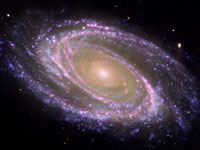 Galaxy formation
Galaxy formation
He further distinguishes between the Radiation Era, in which complexity at the smallest scales (baryons, leptons, antimatter, etc.) and the Matter Era, during which atoms and molecules came into existence. During the "dark age" of the universe, galaxies formed by aggregated matter, but no stars would be seen. This happened only when due to gravitational forces, nebular matter would be compressed into stars in which nuclear processes started to burn. At the same time that matter concentrated itself in stars and planets, the space between them became increasingly empty.
Star formation is especially relevant for our story because it was in the inside of stars that the heavier elements such as Carbon, Oxygen en Nitrogen, were formed. With every higher step in complexity of atoms, due to the compression of the nuclear star matter, energy was released which kept these stars burning. At the end of their life times, even heaver elements up to Uranium could be forged when these stars exploded as supernovae and sometimes turned into black holes. In this phase of the cosmos, simple organic molecules such as water, silicates and amino acids could form in space.
Wilber does not deal with this area of cosmology in any detailed way. What is more, his recent statements during a "Integral Spiritual Experience" seminar (Visser 2011b) do not make us feel confident he is up to this part of science. After a childish story about atoms and molecules "hanging out together", he concludes:
And so we started to get Hydrogen, and Helium and Oxygen and Nitrogen, and Potassium and Sodium and so on, starting to populate the universe. And this in itself is really extraordinary, given that none of this really existed with the Big Bang. And yet the drive, that fundamental drive to creativity -- it has been given many names, including self-organization and Eros -- but this Eros has this extraordinary capacity to fundamentally govern this "creative advance into novelty". (quoted in Visser 2011b)
For Wilber, the creation of subatomic particles, atoms, molecules etc is "evidence of a force that is pushing against randomness in the universe."(quoted in Lane 2011). He even states "The fact that such a thing can happen is a miracle. It's just unbelievable." And he concludes:
All of this, without exception, is driven by love. The great philosophers throughout history have referred to it by many names. Eros is one of the most common. (quoted in Lane 2011)
For sure, there is a wide gulf between the careful—and successful!—explanatory approach of science, and Wilber's tendency to see mysteries and miracles everywhere in Nature. I am very well aware that these statements from Wilber are not taken from his more "serious" writings, but instead from "inner circle" meetings with his students, but precisely for that reason they might very well reflect his true feelings about these matters.[3]
Though Wilber doesn't not really cover the details of this material field of Big History, in his recent writings he does offer some speculations how the theories we hold about matter reflect our stage of mental development (Wilber 2013). For ordinary rationality, matter is composed of atoms, but for the level he calls "vision-logic", it consists of sub-atomic particles. For yet higher stages of cognitive development it consists of 8-way-quarks or 11-dimensional strings. In all these cases, we can never tell what reality "really" consists of, only that each structure of consciousness will perceive/construct its own world and take that to be "reality".
Perhaps that's why he claims to know that in the end the world is driven by Love, since that's the state of enlightened consciousness he supposedly inhabits? Of course, this mystical exhortation can hardly be taken as a serious scientific hypothesis.
Zooming in on our little corner of the Universe, Spier discusses the conditions in our galaxy that have been favorable for the origin and continued development of complex life. For example, you need a host star, enough heavy elements, enough time for biological evolution and an environment free of life extinguishing supernovae.
But it doesn't stop there: you need to have just the right distance to that star, enough iron in the core of the planet to form a protective magnetic field, the proper geothermal heat to drive tectonic plate movement, to provide the landscape for the evolution of life forms, etc. etc. We seem to inhabit a very lucky planet indeed!
The Second Domain: Life or the Biosphere
Life has always bounced back, into a similar regime consisting of a spectrum of organisms ranging from the very simple to the very complex.
According to Spier, the origin of life is still "a major known unknown in science" (p. 75). But what is striking about life is that it represents a new way of achieving complexity: by feeding matter and energy from the environment.
Where stars could feed themselves from the matter stored in their own makeup, living organisms continuously need food to create and maintain their own complexity. What is more, information about how to build this complexity in successive generations is stored in special biomolecules (DNA). These are used to create other biomolecules such as enzymes and proteins, that greatly facilitate this process of complexity building.
Spier covers the geothermal energy flows within the earth, which prepared the landscape for life to inhabit. He also deals with the Gaia hypothesis as advanced by James Lovelock, the increase of oxygen in the atmosphere, the rise of complex organisms in the sea, and the conquest of the land by plants and animals. Here Spier might have included the fascinating studies of Nick Lane (2002, 2005), who explores deep questions about living organisms, such as how oxygen changed from a poison to a life-sustaining molecule, or how the deepest chasm in nature is that between bacteria and all other forms of life.
To those who cast doubt on the idea of Gaia, since evolution never works with foresight or "for the good" of some group of organisms, Spier suggests:
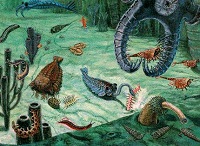 pre-Cambrian life forms
pre-Cambrian life forms
The idea that life could produce Goldilocks circumstances of the Earth's surface for its own benefit may not seem very plausible, for how would all these different life forms have been able to jointly create such a planetary regime with the aid of Darwinian evolution, a process that supposedly acts on individuals? As I see it, the answer may be surprisingly simple. This might have happened as a result of the non-random elimination of all those species that had spoilt its own Goldilocks circumstances. (p. 92)
Seen in this way, a self-regulating Gaia would be the inevitable result of Darwinian evolution. (p. 93)
With the rise of complex organisms, a whole new "food web" arose, with animals eating plants, or other animals, initiating an arms race of hunters and prey. Spier describes the two major growth spurts that have happened in evolution, that of the "Ediacaran/Avalon" and the "Cambrian" explosions. Even if five extinctions have struck the biosphere, life, says Spier
has always bounced back, into a similar regime consisting of a spectrum of organisms ranging from the very simple to the very complex, from microorganisms to plants and animals, while the overall trend has been towards more complex plants and animals... (I)ncreasing complexity has been a good survival strategy, even though it was more expensive to maintain it. (p. 105)
Much more could be said about Spier's careful treatment of the evolution of life, but it is again time to ask: How does Wilber fare in this middle of the three great domains, that of life?
Though Wilber does cover the Gaia hypothesis in some detail in Sex, Ecology, Spirituality—trying to disentangle it from its New Age associations—and even offers his "Twenty Tenets" about abstract evolutionary principles, supposedly governing all evolutionary processes in all of the three great domains, he doesn't show any real affinity with the details of biological science. In fact, his major strategy when dealing with these details seems to have been to cast doubt on the validity of the neo-Darwinian view of evolution.
Here is a random example:
Calculations done by scientists from Fred Hoyle to F.B. Salisbury consistently show that twelve billion years isn't enough to produce even a single enzyme by chance...
In other words, something other than chance is pushing the universe. For traditional scientists, chance was their god. Chance would explain it all. Chance—plus unending time—would produce the universe. But they don't have unending time, and so their god fails them miserably. That god is dead. Chance is not what explains the universe; in fact, chance is what that universe is laboring mightily to overcome. Chance is exactly what the self-transcending drive of the Kosmos overcomes. (Wilber 1996)
In this poetic statement Wilber misrepresents the basic notion of evolutionary science that evolution is the result of random chance and non-random selection or elimination, and not of chance alone—a distinction that seems lost on Wilber. I have tried to demonstrate in a paper called "The 'Spirit of Evolution' Reconsidered", which was presented at the Integral Theory Conference of 2010 (Visser 2010a), that
Ken Wilber has not made a strong case yet for his "theory" of spiritual evolution. It lacks scientific grounding, echoes sentiments from creationists, and is unclear, biased and highly selective in its formulations. It lacks a true engagement with science.
Unfortunately, interest in biological theory is extremely low in the integral community, which is dominated by psychologists, as no one has taken the trouble yet to defend Wilber's position, including Wilber himself, who continues to promote his spiritual view of evolution to this very day.[4]
The Third Domain: Mind/Culture of the Noosphere
Current estimates are not encouraging... In fact, it may well be that the end game has already begun.
In two chapters Spier covers the emergence and development of "the greatest known complexity", that of human beings and their brains. The costs of having large brains, both in terms of energy needed and birth risks, apparently were compensated by the advantages offered by such a unique organ. In combination with warm-bloodedness, an intricate nervous system could be supported, to produce the growth of intelligence. Human beings have been able to harvest matter and energy as no other organism has been able to do, especially when the use of fire was introduced.
And, of course, culture or "collective learning" as Spier calls it, became feasible. Through culture, human beings created "external complexity" (books, machines, houses, etc.). Especially during the past few centuries, humans have learnt to utilize the rich source of fossil energy stored in oil, gas and coal.[5]
Spier focuses on energy use, as major determinant of history, which he justifies as follows:
Such an approach to human history may not be popular among historians and social scientists. Certainly, human behavior is far more complex than just harnessing matter and energy. Yet it cannot be denied that like all other life forms, humans are unable to escape the consequences of the second law of thermodynamics. If we want to prevent our bodily complexity as well as all the complexity that we have created from descending into chaos, we must keep harvesting matter and energy flows on a regular basis. This is the bottom line of human history. I will therefore argue that during most, if not all of human history, the quest for sufficient matter and energy to survive and reproduce within certain Goldilocks circumstances has been the overriding theme. (p. 116)

From 10.000 years ago, recent human history can be said to have started. Spier discusses the agrarian revolution and its social consequences (population growth, increasing hierarchical organization of society, the need for self-discipline, the emergence of religions). The net effect of humans on nature turned out to be such that tamed animal species increased, where wild animal species decreased in number. Indeed, we have created an enormous reservoir of fungal, plant and animal species that serves our purpose of food, work force or pleasure. Wild species have continuously been exterminated, wherever humans arrived on the scene.
Spier gives an overview of the various waves of globalization that have spread over the globe, initiated from the West:
- A first wave of colonization started about 500 years ago with the "discovery" of the New World, the Far East, and the opportunities for commerce that it offered.
- The second wave started with industrialization, which intensified the use of fossil energy sources tremendously. Science and technology also flourished in its wake.
- The third wave of informatization, the digital Age we are now seeing before our very eyes, in which communication has become global and instantaneous.
Energy use has continued to increase, during this historical period, with limited fossil energy resources—for sure a gloomy prospect:
(T)he most critical question appears to be how much energy is available in the near future for constructing sufficient amounts of complexity, while keeping entropy [pollution] down to desirable levels. Current estimates are not encouraging... In fact, it may well be that the end game has already begun. If scientists are able to construct workable nuclear fusion reactors or any other similar energy source, this may greatly alleviate our future energy needs. But right now, the prospects for doing so are not favorable. Given this situation, humankind may have no choice but to return to a lifestyle based on renewable energy. (p. 197) [6]
Summarizing Spier's approach to Big History one can say that he documents the various forms of complexity that have arisen during each of the historical Eras and regimes, whenever circumstances have been "just right". This applies both to the appearance of subatomic particles, the formation of galaxies and stars, the origin of life on Earth and the spread of human civilization. His specific focus is on energy use and energy efficiency throughout his exposition as the major determining factor behind this Big History sets him apart from most other writers in this field (with the exception of Chaisson).
How does Wilber compare to this? Early on in his writing career, he has documented the emergence of human culture in his book Up from Eden (1981), from the perspective of human and cultural development. Jean Gebser's division of human history in 5 major eras (archaic, magical, mythical, mental and integral) formed the backbone of Wilber's story. In Sex, Ecology, Spirituality he picked up on this story again, presenting a dialectic but in the end optimistic vision of cultural progress across the ages. Unfortunately, I haven't been able to find reviews of this book from academic corners. Rumor has it that the Pentagon ordered large amounts of copies of Up from Eden, to familiarize itself with non-Western cultures.
In Sex, Ecology, Spirituality Wilber also covers the different waves of globalization—colonial, industrial, informational—but he would relate these first and foremost to successive stages of cultural consciousness, given his idealistic and developmentalist position. In this book he also introduced his now canonical four quadrant model, which distinguishes between four basic perspectives to be taken into account when studying human consciousness and culture, based on the two basic dichotomies of interior/exterior and individual/collective:
INDIVIDUAL- INTERIOR
(consciousness)
|
INDIVIDUAL- EXTERIOR
(behavior)
|
COLLECTIVE- INTERIOR
(culture)
|
COLLECTIVE- EXTERIOR
(society, cosmos)
|
The Four Quadrants (Ken Wilber, 1995)
This simple and intuitive model allowed him to classify all major approaches to human consciousness and history, and spot and expose their one-sidedness. In this respect, Spier's account of Big History offers much in terms of the two quadrants on the right-hand side (behavior/society/evolution/cosmos), but relatively little on those on the left-hand side (consciousness/culture). As he mentioned above, Spier is aware of this onesidedness, but defends it by assigning a decisive influence to material and energetic processes.
Wilber, on the other hand, is strong on the left-hand quadrants, but is weak or questionable in his treatment of the hard sciences, such as cosmology and evolutionary theory—though he will, of course deny this. (In theory, integral theory would cover all four quadrants).
When it comes to the profound question of what actually drives the evolution of the cosmos, life and culture, the difference between the two authors is even larger. Where Wilber continues to flirt with mystical forces such as Eros as the source of novelty and increased complexity, Spier stays well within the naturalistic framework of science. Parsimony would advise to pay more attention to Spier's claims.
Wilber's detailed focus on cultural evolution, world politics, and his use of the cultural conflict-resolution model of Spiral Dynamics, would make his analysis more practically relevant than Spier's for our most pressing world problems. Spier, on the other hand, throws new light on the energy needs and sustainability of our human civilization. But then again, current issues of society seem to pale compared to the time spans Big History is used to deal with.
On the other hand, some scientists have recently suggested that we have entered a new epoch, the Antropocene, due to our massive and often negative impact on the biosphere and the Earth's climate. We have definitely entered cosmic history!
This comparative introduction to both fields of integrative enquiry cannot be anything other than impressionistic, but I hope I have stimulated interest in these areas from both sides of the fence. Integral Studies can only benefit from mutual exchanges with approaches that share the goal of integrating all available knowledge.
NOTES
1. Wolf Schneider hinted at the same in his "Ken Wilbers Genie, Größenwahn und intellektuelle Schärfe" (Ken Wilber's genius, megalomania and intellectual acumen"), published in the jan/feb 2013 issue of Connection.
2. I looked up "entropy" in the index of Sex, Ecology, Spirituality, but also did an Amazon "Look Inside" search though the book (assuming that the full content of the book has been indexed). And of course, I have studied the book, several times, when it came out.
3. Wilber displays a much better understanding of cosmological and biological evolution in his Loft-Series talk available on IntegralLife.com as a members-only audio: "From the Big Bang to the Big Three", June 15th, 2012, http://integrallife.com/loft-series/big-bang-big-three. But he still sticks to his Eros- or "inherent-drive-towards-complexity-in-the-cosmos"-theory.
4. What is more, recently two books have been written by integral authors that strengthen the spiritualist outlook on cosmic evolution: Carter Phipps, Evolutionaries: Unlocking the Spiritual and Cultural Potential of Science's Greatest Idea (2012), Harper Collins/Perennial, and Steve McIntosh, Evolution's Purpose: An Integral Interpretation of the Scientific Story of Our Origins (2012), SelectBooks. Both titles have been reviewed (Visser 2012a, b) on Integral World. What is remarkable is that none of these authors have critically engaged with Wilber's take on biological and cosmic evolution.
5. Taking a Big History perspective, one could say that introducing CO2 in the Earth's atmosphere during the past 300 years, which has been lying dormant in the Earth for 300 million years, cannot result in anything other than a climate shock of unprecedented proportions, I would like to add. But that is just my layman's opinion.
6. See also Tomislav Markus' essay on this website: "The Great Turning Point: Peak Oil and the Disintegration of Industrial Civilization". Markus was pessimistic about all "renewable energy" initiatives given the enormous energy needs of the Western civilization, not to mention the emerging Asian economies.
REFERENCES
Chaisson, E. (2001). Cosmic Evolution: The Rise of Complexity in Nature, Harvard University Press.
Chaisson, E. (2005). Epic of Evolution: The Seven Ages of the Cosmos, Colombia University Press.
Chaisson, E. (2006). The Great Unifier. New Scientist, January, pp. 36-38.
Christian, D. (2005). Maps of Time: An Introduction to Big History, California Press.
Falk, G. (2009). "Norman Einstein": The Dis-Integration of Ken Wilber, http://www.normaneinsteinbook.com/
Gribbin, J. (2012). The Reason Why: The Miracle of Life on Earth, London, Penguin.
Forman, M.D. & S. Esbjörn-Hargens. (2010). The Academic Emergence of Integral Theory: Reflections on and Clarifications of the 1st Biennial Integral Theory Conference, June, http://www.integralworld.net/forman-hargens.html
Jantsch, E. (1980). The Self-Organizing Universe: Scientific and Human Implications of the Emerging Paradigm of Evolution, Oxford, Pergamon.
Lane, D. (2011). Frisky Dirt: Why Ken Wilber's New Creationism is Pseudo-Science, http://www.integralworld.net/lane19.html
Lane, N. (2002). Oxygen: The Molecule that Made the World, Oxford, Oxford University Press.
Lane, N. (2005). Power, Sex, Suicide: Mitochondria and the Meaning of Life, Oxford University Press.
Markus, T. (2010). The Great Turning Point: Peak Oil and the Disintegration of Industrial Civilization, http://www.integralworld.net/markus6.html
Spier, F. (2005). How Big History Works: Energy Flows and the Rise and Demise of Complexity, Social Evolution & History, Vol. 4 No. 1, March 87-135.
Spier, F. (2011). Big History and the Future of Humanity. Wiley-Blackwell.
Učik, M. (2010). Integral Relationships: A Manual for Mensingles2couples.org Publishing.
Visser, F. (1995). Bodhisattvas are Going to have to Become Politicians, Fax-interview with Ken Wilber, http://www.integralworld.net/intervieweng1.html
Visser, F. (2010a). The 'Spirit of Evolution' Reconsidered, Relating Ken Wilber's view of spiritual evolution to the current evolution debates, August, http://www.integralworld.net/visser33.html
Visser, F. (2010b). A New Phase of Integral Theory? Impressions of the 2nd Biannual Integral Theory Conference at JFK University, July 29 - August, 1 2010, August, http://www.integralworld.net/visser35.html
Visser, F. (2011a). Ken Wilber's "Divine Comedy", An Interview with Jeff Meyerhoff about the book release of Bald Ambition, March, http://www.integralworld.net/visser42.html
Visser, F. (2011b). Heavy Elements: Why Integral Physics is Lost in Space, http://www.integralworld.net/visser43.html
Visser, F. (2012a). The Evolution Religion: Making Sense of Evolution, Review of Carter Phipps' Evolutionaries (2012), http://www.integralworld.net/visser50.html
Visser, F. (2012b). Platonic Evolution: Review of Steve McIntosh' Evolution's Purpose (2012), http://www.integralworld.net/visser51.html
Wilber, K. (1981/2007). Up from Eden: A Transpersonal View of Human Evolution, Quest Books.
Wilber, K. (1995). Sex, Ecology, Spirituality: The Spirit of Evolution, Boulder: Shambhala.
Wilber, K. (1996). A Brief History of Everything, Boulder: Shambhala.
Wilber, K. (2013). Response to Critical Realism in Defense of Integral Theory, www.integrallife.com, January. http://integrallife.com/integral-post/response-critical-realism-defense-integral-theory
|

 Frank Visser, graduated as a psychologist of culture and religion, founded IntegralWorld in 1997. He worked as production manager for various publishing houses and as service manager for various internet companies and lives in Amsterdam. Books: Ken Wilber: Thought as Passion (SUNY, 2003), and The Corona Conspiracy: Combatting Disinformation about the Coronavirus (Kindle, 2020).
Frank Visser, graduated as a psychologist of culture and religion, founded IntegralWorld in 1997. He worked as production manager for various publishing houses and as service manager for various internet companies and lives in Amsterdam. Books: Ken Wilber: Thought as Passion (SUNY, 2003), and The Corona Conspiracy: Combatting Disinformation about the Coronavirus (Kindle, 2020). 










